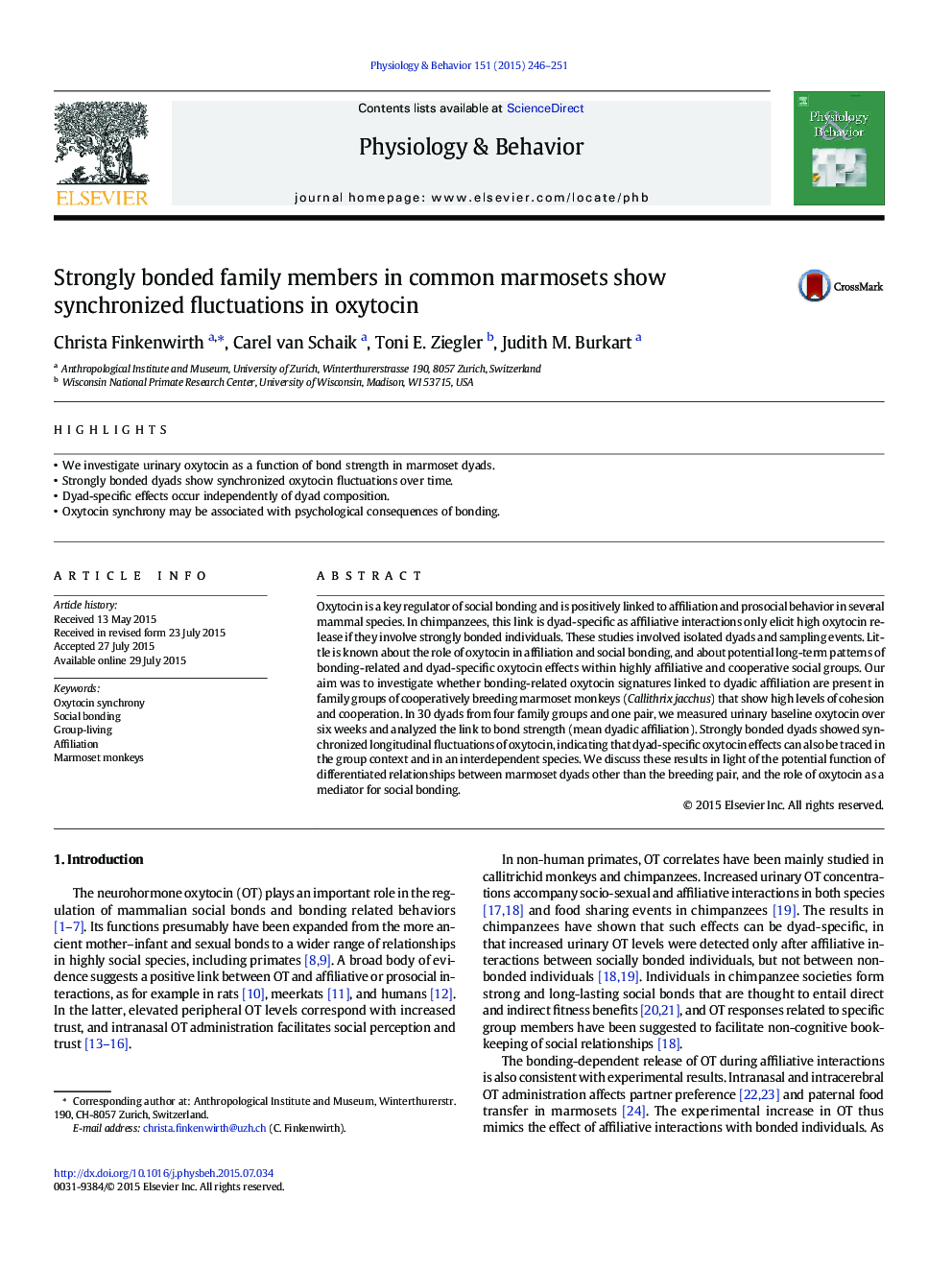| کد مقاله | کد نشریه | سال انتشار | مقاله انگلیسی | نسخه تمام متن |
|---|---|---|---|---|
| 5923269 | 1571166 | 2015 | 6 صفحه PDF | دانلود رایگان |
• We investigate urinary oxytocin as a function of bond strength in marmoset dyads.
• Strongly bonded dyads show synchronized oxytocin fluctuations over time.
• Dyad-specific effects occur independently of dyad composition.
• Oxytocin synchrony may be associated with psychological consequences of bonding.
Oxytocin is a key regulator of social bonding and is positively linked to affiliation and prosocial behavior in several mammal species. In chimpanzees, this link is dyad-specific as affiliative interactions only elicit high oxytocin release if they involve strongly bonded individuals. These studies involved isolated dyads and sampling events. Little is known about the role of oxytocin in affiliation and social bonding, and about potential long-term patterns of bonding-related and dyad-specific oxytocin effects within highly affiliative and cooperative social groups. Our aim was to investigate whether bonding-related oxytocin signatures linked to dyadic affiliation are present in family groups of cooperatively breeding marmoset monkeys (Callithrix jacchus) that show high levels of cohesion and cooperation. In 30 dyads from four family groups and one pair, we measured urinary baseline oxytocin over six weeks and analyzed the link to bond strength (mean dyadic affiliation). Strongly bonded dyads showed synchronized longitudinal fluctuations of oxytocin, indicating that dyad-specific oxytocin effects can also be traced in the group context and in an interdependent species. We discuss these results in light of the potential function of differentiated relationships between marmoset dyads other than the breeding pair, and the role of oxytocin as a mediator for social bonding.
Journal: Physiology & Behavior - Volume 151, 1 November 2015, Pages 246–251
